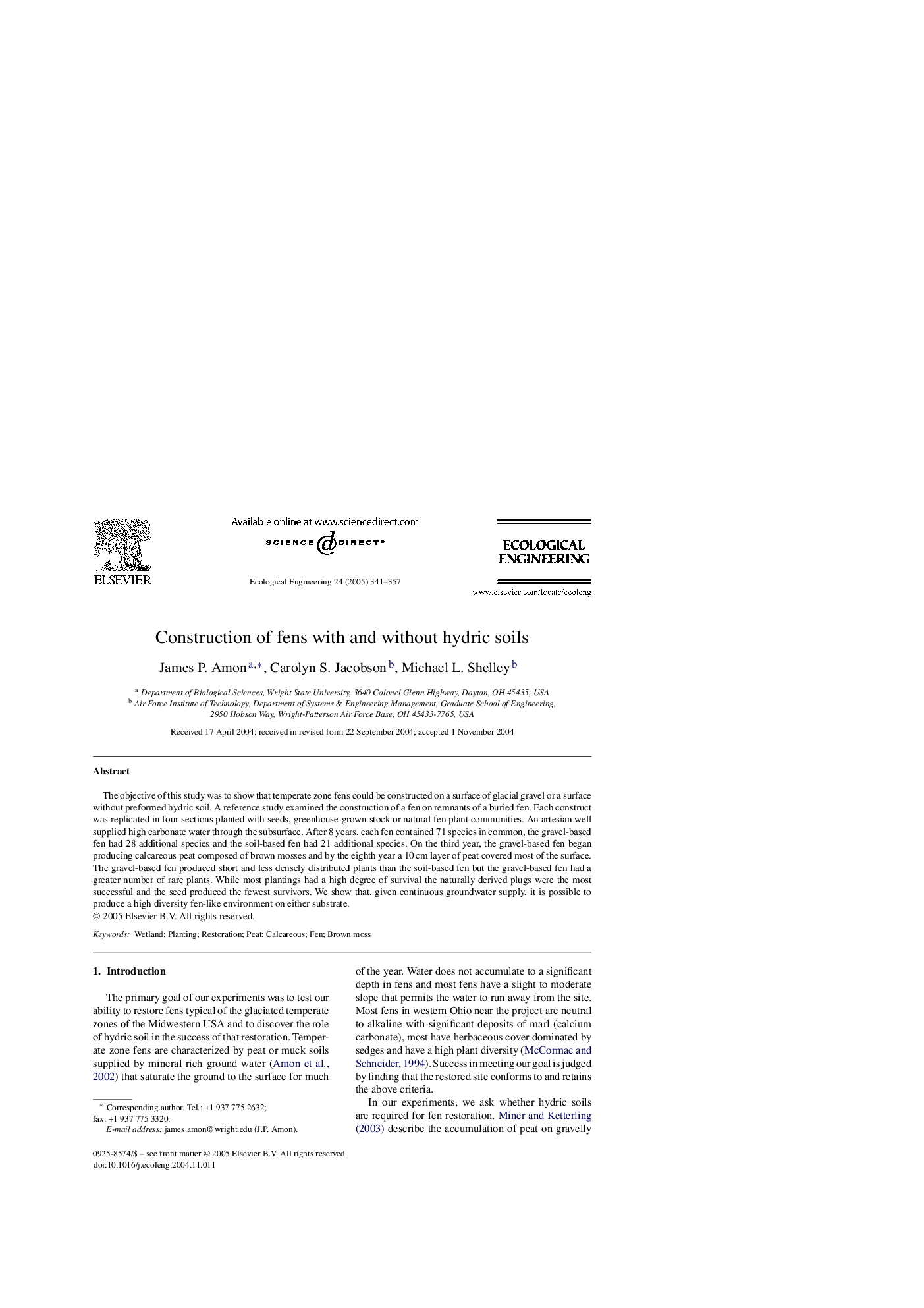| Article ID | Journal | Published Year | Pages | File Type |
|---|---|---|---|---|
| 9447434 | Ecological Engineering | 2005 | 17 Pages |
Abstract
The objective of this study was to show that temperate zone fens could be constructed on a surface of glacial gravel or a surface without preformed hydric soil. A reference study examined the construction of a fen on remnants of a buried fen. Each construct was replicated in four sections planted with seeds, greenhouse-grown stock or natural fen plant communities. An artesian well supplied high carbonate water through the subsurface. After 8 years, each fen contained 71 species in common, the gravel-based fen had 28 additional species and the soil-based fen had 21 additional species. On the third year, the gravel-based fen began producing calcareous peat composed of brown mosses and by the eighth year a 10Â cm layer of peat covered most of the surface. The gravel-based fen produced short and less densely distributed plants than the soil-based fen but the gravel-based fen had a greater number of rare plants. While most plantings had a high degree of survival the naturally derived plugs were the most successful and the seed produced the fewest survivors. We show that, given continuous groundwater supply, it is possible to produce a high diversity fen-like environment on either substrate.
Related Topics
Life Sciences
Agricultural and Biological Sciences
Ecology, Evolution, Behavior and Systematics
Authors
James P. Amon, Carolyn S. Jacobson, Michael L. Shelley,
